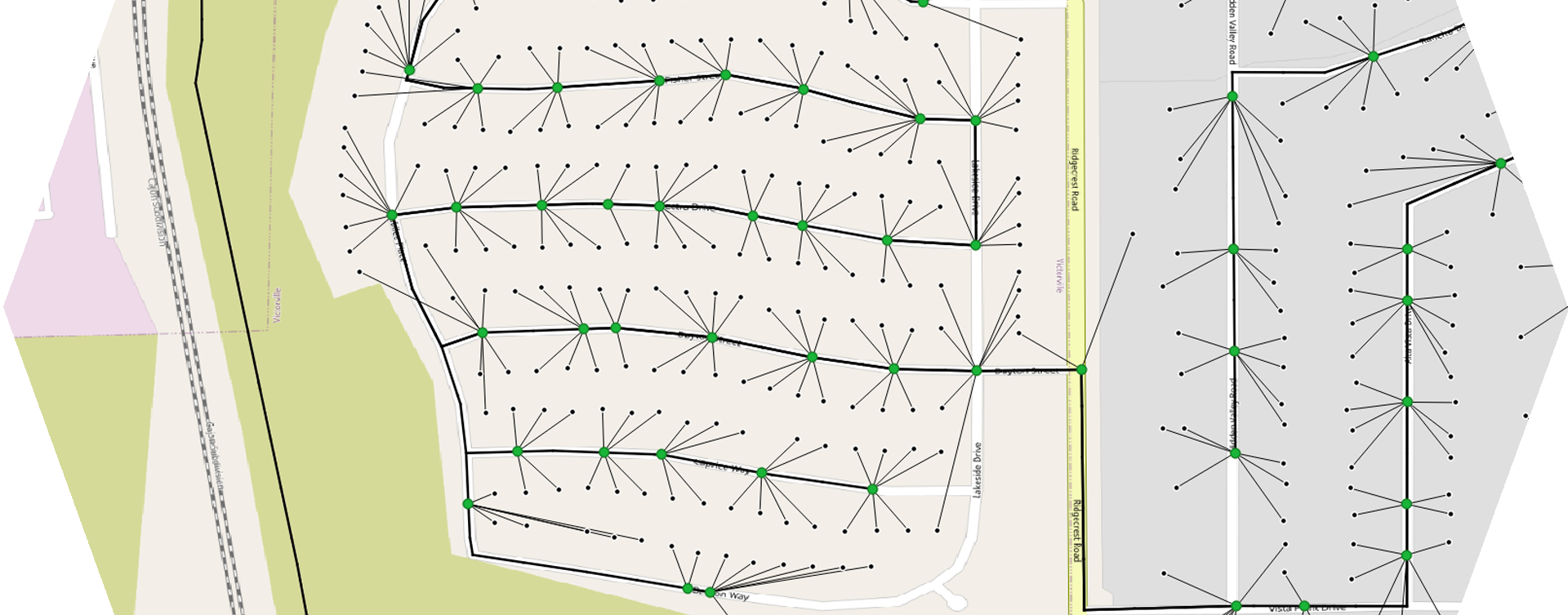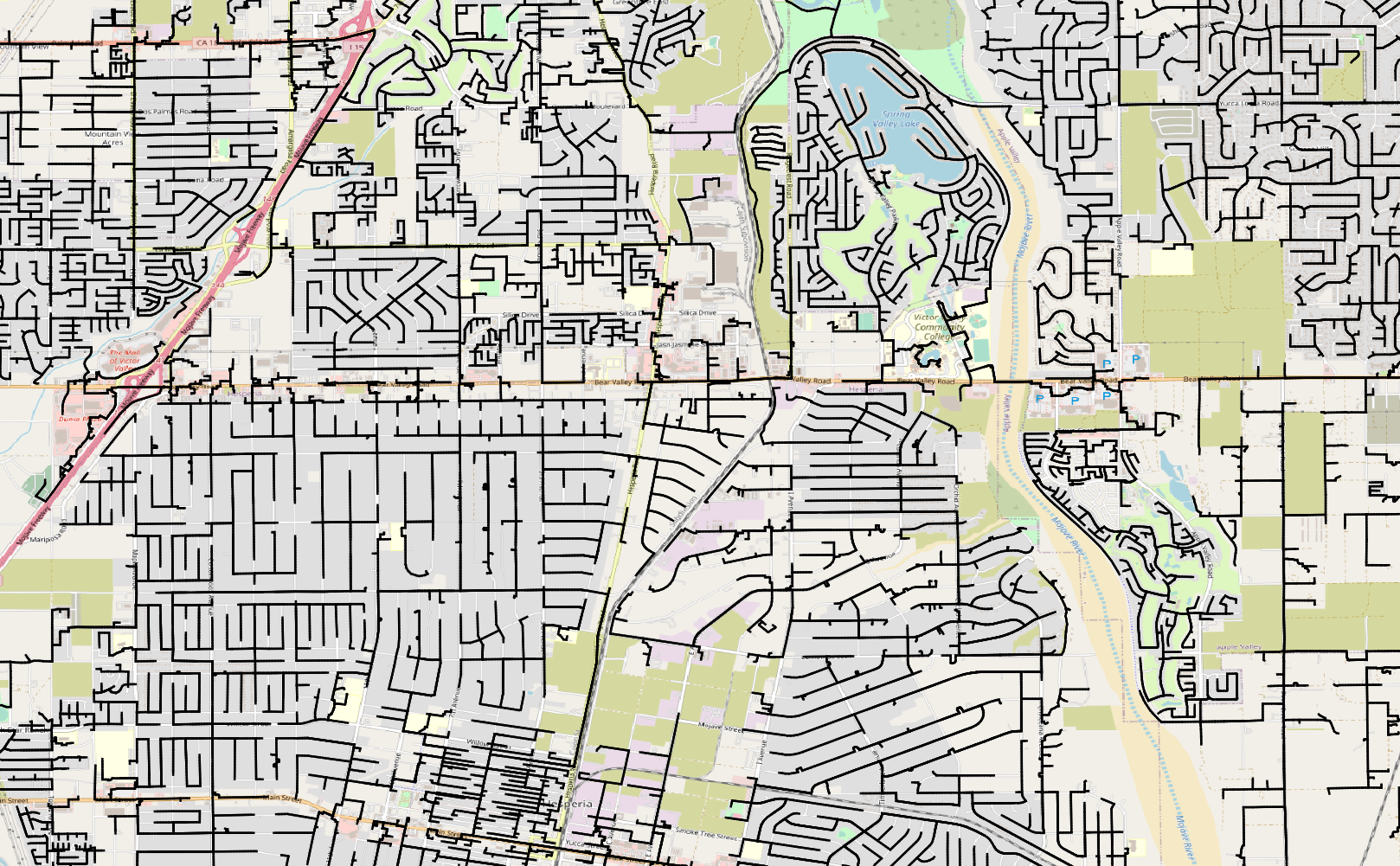Hexvarium Relies on LocalSolver to Solve their Fiber Network Design Problems
Article
•
February 1, 2023

Hexvarium Relies on LocalSolver to Solve their Fiber Network Design Problems
By Léa, Optimization Scientist
February 1, 2023
Hexvarium Relies on LocalSolver to Solve their Fiber Network Design Problems
The American company Hexvarium, a next-generation developer, facilitator, and operator of broadband networks, recently chose LocalSolver to help them design city-wide optic fiber networks. Hexvarium is a broadband service provider using data-oriented methods to accurately identify, deliver, and connect profitable networks across the United States. Their innovative approach delivers sustainable networks, even in the most challenging circumstances, and enables investors, utilities, municipalities, and businesses to quickly determine how and where to build fiber networks for the highest possible impact and the best possible return to investors.
Hexvarium Relies on LocalSolver to Solve their Fiber Network Design Problems
Hexvarium has been tasked with designing the whole optic fiber network of several cities across the United States. Building such a network requires connecting every client address to the city’s central office while routing the optic fiber cables in the best possible way.
The route connecting a given client to the central office is split into several sections, separated by splitter nodes of different sizes. Along this route, the cables have a higher fiber count when coming out of the central office and a lower fiber count as they get more specific and closer to the client’s address. The hierarchy followed by the different route sections is as follows. The city’s main central office is first connected to several secondary central offices across the city, using very thick cables with a high fiber count. The cables coming out of these secondary central offices still have a high fiber count and need to be split several times before being connected to the clients’ addresses, using primary and secondary splitter nodes. The cables coming out of the secondary splitter nodes are individual fibers and can be connected to separate client addresses.
The splitter nodes have very constrained fiber counts. For example, about eight fibers generally come out of each secondary splitter node. So as not to waste resources, most of those fibers have to be connected to a client address. However, a few fibers should remain unused to make the network more sustainable. Indeed, these unused fibers could be connected to new client addresses in the future.
Mathematical model
Input data
The input data consists of a graph representing the city’s streets and roads. The city has up to 500.000 road segments for a cumulated length of 13.000 kilometers, which correspond to the edges of the graph. The nodes of the graph are the intersection points between those road segments. Up to 130.000 of these nodes are client addresses. Another node corresponds to the location of the main central office.
 Example of a graph representing a city’s streets and roads
Example of a graph representing a city’s streets and roads
Decisions
The fiber network design consists in deciding which road segments should be used to run the cables, and where to place the primary and secondary splitter nodes.
Constraints
There are three types of constraints in the model. The splitter nodes hierarchy constraints must be respected: each cable coming out of the main central office has to go through a secondary central office, at least one primary splitter node, and a secondary splitter node before reaching a client address. There also are degree constraints on the splitter nodes, ensuring that the number of output cables is neither too high nor too low. Finally, the total length of the fiber connecting any client address to a secondary central office should not exceed a certain limit.
 Close-up on a neighborhood’s network: the black edges are optic fibers, the green nodes are secondary splitter nodes, and the black nodes are client addresses
Close-up on a neighborhood’s network: the black edges are optic fibers, the green nodes are secondary splitter nodes, and the black nodes are client addresses
Objectives
The objective consists in minimizing the total deployment cost, which depends on the number of splitter nodes and on the total length of fiber in the network.
Why LocalSolver?
Hexvarium had already benefited from LocalSolver’s expertise on a scheduling problem for deployment operations and was very satisfied with the results. Besides, LocalSolver already had expertise in telecommunication deployment topics with Network Design for Bouygues Telecom. This motivated why Hexvarium to choose LocalSolver to help them with their fiber network design problem.
Hexvarium’s team was delighted with LocalSolver’s ability to provide good solutions in short running times. For example, the largest instance (500.000 road segments, 130.000 client addresses) was solved in only 10 minutes. They also greatly appreciated LocalSolver’s agile methodology. They appreciated how LocalSolver’s experts managed to iterate quickly on the design of the solution based on their operational feedback.
Originally published on LocalSolver.
About Hexvarium
Hexvarium is a broadband service provider using proprietary Data Science to accurately identify, deliver, and connect profitable networks across all geographies. Building sustainable broadband networks is a complex puzzle of continually changing factors. Yet all other designers, engineers and operators deploy capital using static, antiquated methods and knowledge of each community. Hexvarium’s approach delivers sustainable networks, even in the most challenging circumstances. For more information, please visit hexvarium.com.
Media Contact:
Jennifer Spoerri
Gallagher PR